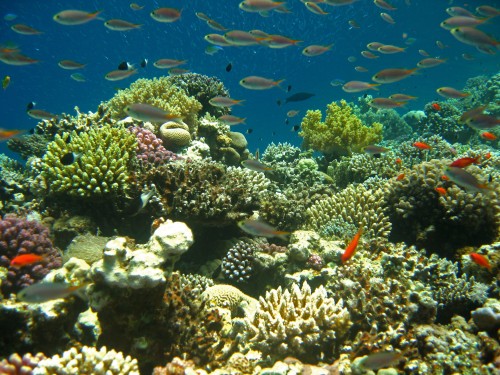Welcome to the Ocean Reefs Learning Section

OCEAN REEFS - are a rock, sandbar, or other feature lying beneath the surface of the water (six fathoms (11m) or less beneath low water). Many reefs result from abiotic processes—deposition of sand, wave erosion planing down rock outcrops, and other natural processes—but the best-known reefs are the coral reefs of tropical waters developed through biotic processes dominated by corals and calcareous algae. Artificial reefs such as shipwrecks are sometimes created to enhance physical complexity on generally featureless sand bottoms in order to attract a diverse assemblage of organisms, especially fish.
There is a variety of biotic reef types, including oyster reefs, but the most massive and widely distributed are tropical coral reefs. Although corals are major contributors to the framework and bulk material comprising a coral reef, the organisms most responsible for reef growth against the constant assault from ocean waves are calcareous algae, especially, although not entirely, species of coralline algae.
These biotic reef types take on additional names depending upon how the reef lies in relation to the land, if any. Reef types include fringing reef, barrier reefs, as well as atolls. A fringing reef is a reef that is attached to an island. A barrier reef forms a calcareous barrier around an island resulting in a lagoon between the shore and the reef. An atoll is a ring reef with no land present. The reef front (ocean side) is a high energy locale whereas the internal lagoon will be at a lower energy with fine grained sediments.
We ask you to please donate to the Big MaMa Earth Learning Academy an environmental solution based non-profit. Your donations will be utilized for continuing education and protection of “Ocean Reefs” and other important issues.
Please click the Icon’s below to view “Video’s” & “Photos”, review “Scientific Information” and be part of the “Solution”. “Your Future is NOW!”







